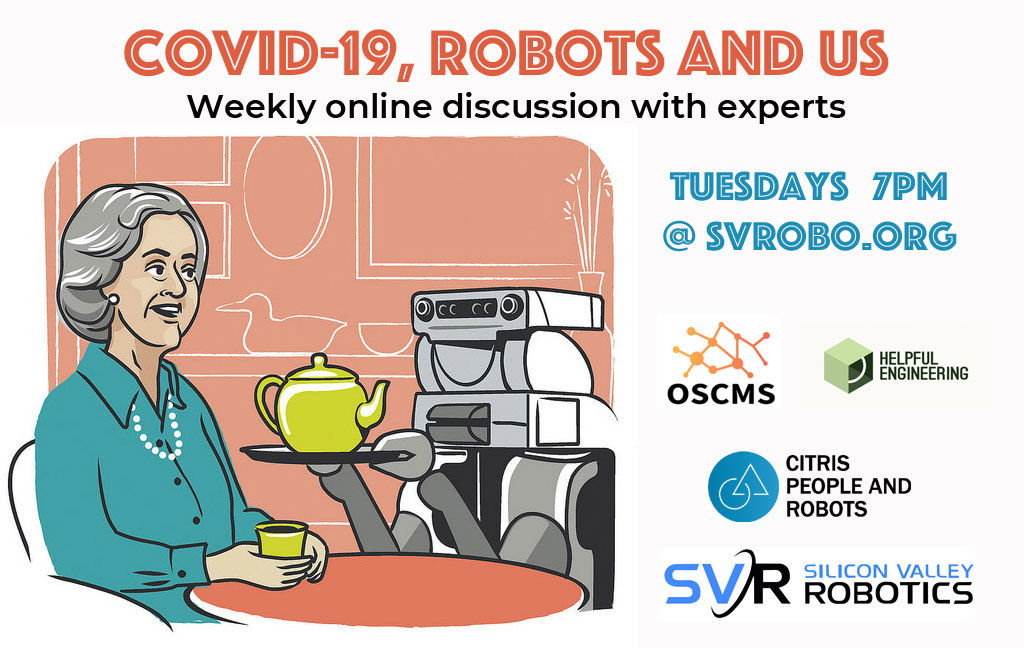Wired Magazine recently called for us to, post pandemic, “ditch our tech enabled tools of social distancing”. But are our telepresence robots creating emotional distancing or are they actually improving our emotional lives. This week in our weekly “COVID-19, robots and us” discussion with experts, we’re looking at the topic of virtual presence and emotional contact as well as many other practical ways that robotics can make a difference in pandemic times.
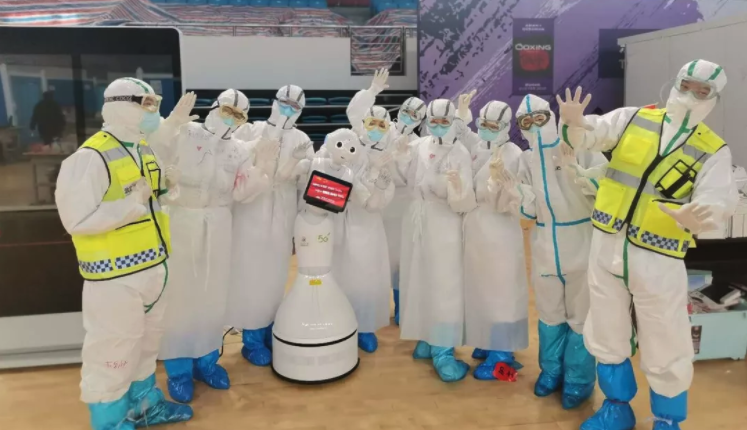
Robin Murphy, Raytheon Professor at Texas A&M University and founder of the field of Rescue Robotics, was involved in the very first use of robots in a disaster scenario in 9/11. Since then she’s been involved in multiple disaster responses worldwide, including the Ebola outbreak in 2014-2016. During the US Ebola outbreak, the White House Office of Science, Technology and policy, and then later NSF did a series of workshops, and myself and Ken Goldberg, are among those who participated in work with various public health officials in groups such as Doctors Without Borders.
“Some of the lessons learned about infectious diseases in general, and for COVID, in particular, are that there’s really five big categories of uses of robots. Most everybody immediately thinks of clinical applications, or things that are directly related to the health care industry, but the roll of robots is far broader than that. It’s not always about replacing doctors. It’s about how can robots assist in any way they can in this whole large, complex enterprise of a disaster.” [Robin Murphy March 31 2020]
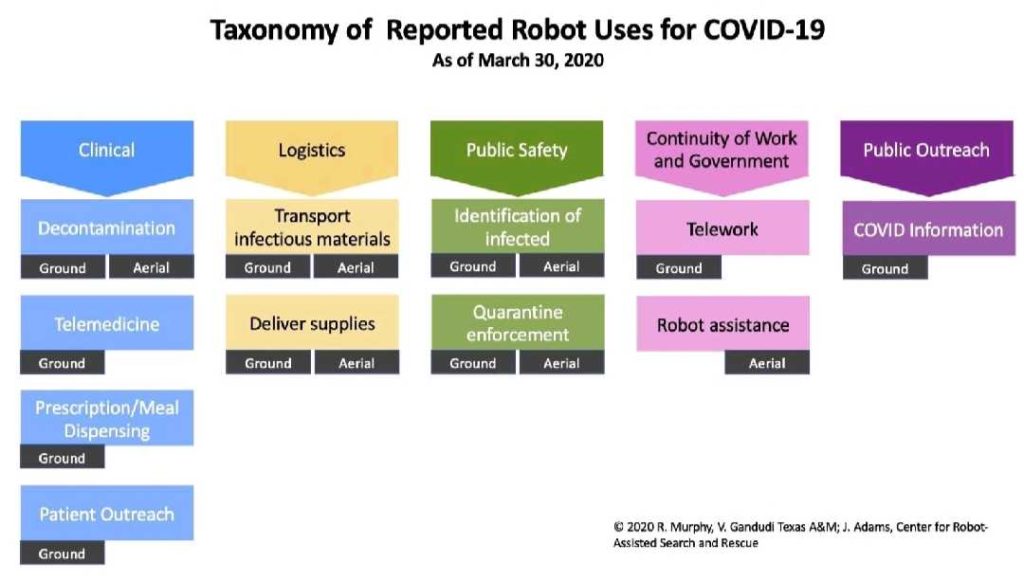
Ross Mead’s company Semio develops software for robot operation that focuses on how people will live, work and play with robots in their everyday lives. “We’re building an operating system and app ecosystem for in home personal robots. And all of our software relies on natural language user interfaces, just speech and body language or other social cues.”
“Right now as it pertains to COVID-19. We are working with a team of content creators from a company called copy to develop conversational content similar to chatbots, or voice voice based skills that’s geared towards informing users about or helping mitigate the spread of COVID-19. We’re also developing socially aware navigation systems for mobile robots, natural human environments. I would love to talk about use cases for social robots, even telepresence robots, as well as the impacts of social isolation in these times.” [Ross Mead March 31 2020]
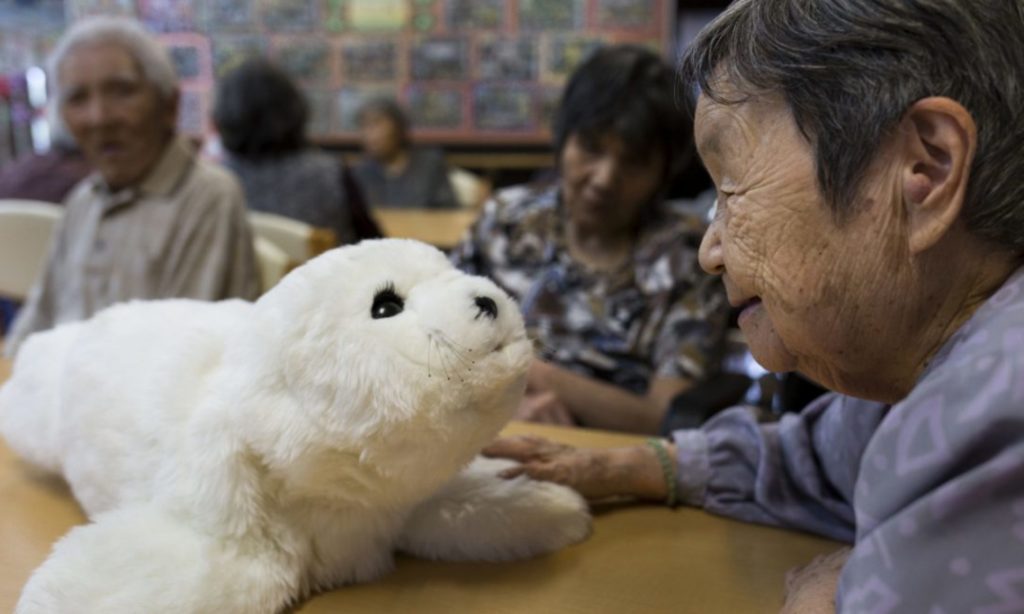
Wendy Ju studies people’s interaction with autonomous cars, systems or robots. She focuses on things like nonverbal cues, and the things people do to coordinate and collaborate with one another. Her PhD dissertation was on the design of implicit interactions, something a lot of us take for granted or consider static, not dynamic. Through her work on autonomous cars, she’s been exploring the subtle cues that convey critical information.
“if we get these things wrong, or it’s life or death. I think we’re starting to understand that a lot of the things that we think of as interaction are only the top layer of what we’re actually doing all the time with other people. And if we don’t understand those lower layers, it could kill us.”
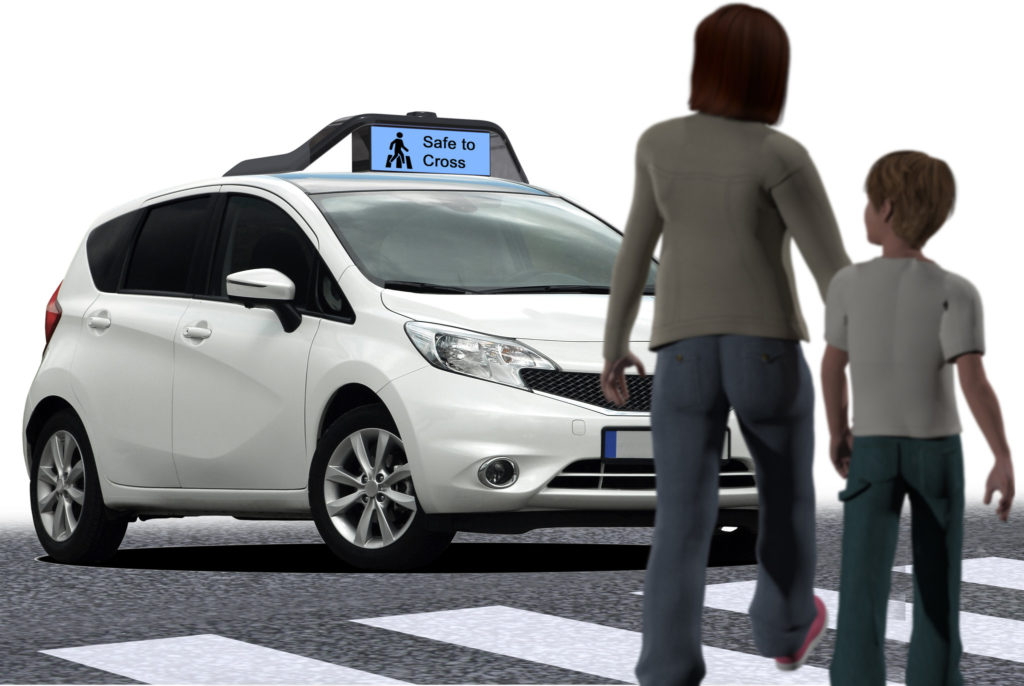
“So last week, I put together a proposal to study how people are interacting with one another in the city around the social distancing policy. And I agree the name is not perfect, but I think it also gets to the heart of what’s important to do. In this epidemic, there’s a halo effect around our social interactions because we know they’re necessary and good for us. And so people think, well, I shouldn’t go to the grocery stores and go to the hospital. But surely, it can’t be bad to go visit my neighbor or surely it can’t be bad to go see my grandmother, these kind of inclinations will kill us, when taken to scale.”
“When we say social distancing, we’re saying like, yes, school is good, but school is bad in the situation, churches good, but churches are bad in the situation, really getting at the thing that we are so tempted to do that is literally the thing that we’re trying to stop right now. I think that’s why they call it social distancing. And it does definitely have a physical corollary. I’m interested to see afterwards, if those people who were playing basketball and other people who were playing soccer, are those places where people got more sick or not? We don’t actually know all the different mechanisms for transmission for disease. And I think later on, we’ll be able to figure it out.” [Wendy Ju March 31 2020]
Cory Kidd is the CEO and founder of Catalia Health, which uses social robots for medical care management. Catalia Health has done extensive clinical trials prior to commercial roll out and leads the world in understanding robots for medical care.
“The concept of chronic disease management of course is not new, it’s just that the usual model is very human powered. We do it in clinical settings, in the doctor’s office, in the hospital, and we send people out to homes, and a lot of the work is done by calling patients on the phone to check in on them. We replace all of those by putting actually a physical robot in the patient’s home to talk to them.
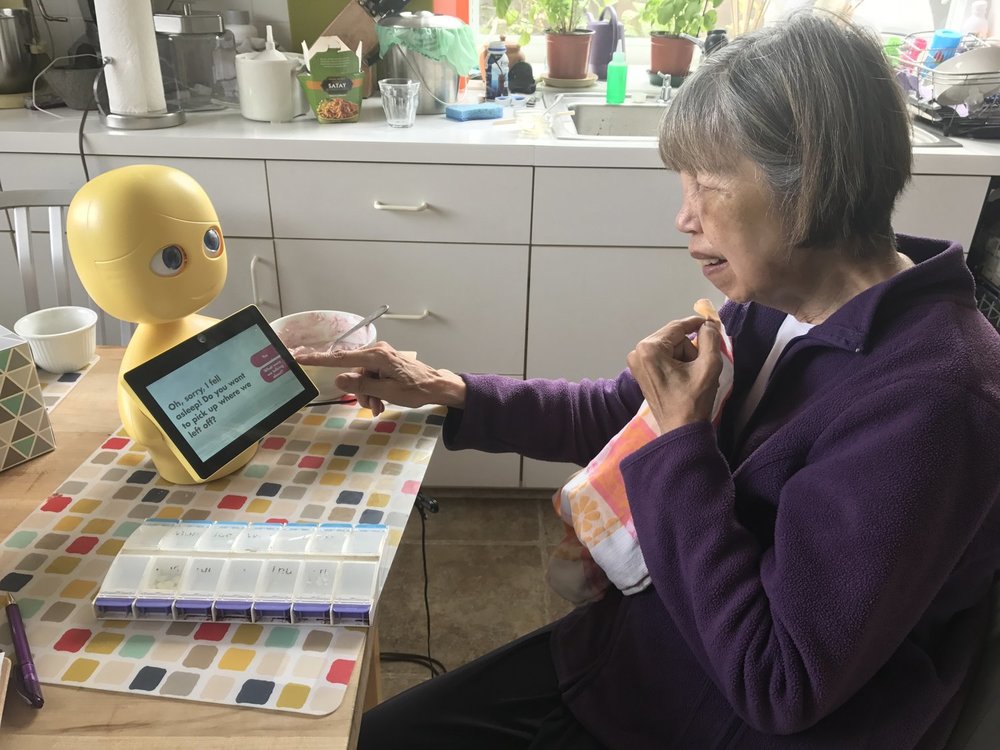
“So what we’re doing on the AI side is generating conversations for patients on the fly, for whatever condition they’re dealing with, and we build these around specific conditions. The robotic piece of it is really driven by the psychology around why we would rather be all in a room together, as opposed to, gathering around our computers and staring into the the screen at zoom. We intuitively get that physical presence is different. “
“When we’re face to face with someone, they’re more engaged, we create stronger relationships and a number of other things. Research showed that those differences actually carry over into the future. When you put a cute little robot in front of someone that can look them in the eyes while it’s talking to them, we actually get a lot of the effects of face to face interaction. And so we’ve leveraged that to build chronic disease care management programs. Over the last couple of years, we’ve been rolling these out largely in specialty pharmacy, so we work with some of the largest pharma manufacturers in the world, like Pfizer. We’re helping patients across a number of different conditions really keep track of how they’re doing, to stay on therapy and stay out of the hospital using our AI and robotics platform.”
“The current situation around the world is really highlighting the need for more of this kind of technology.” [Cory Kidd March 31 2020]
Ken Goldberg is the director of CITRIS People and Robots Initiative, and the William s. Floyd Jr. Distinguished Chair in Engineering at UC Berkeley. Both Ken and Robin are amongst the authors of recent editorial in Science Robotics “Combating COVID-19 – The role of robotics in manging public health and infectious diseases”.
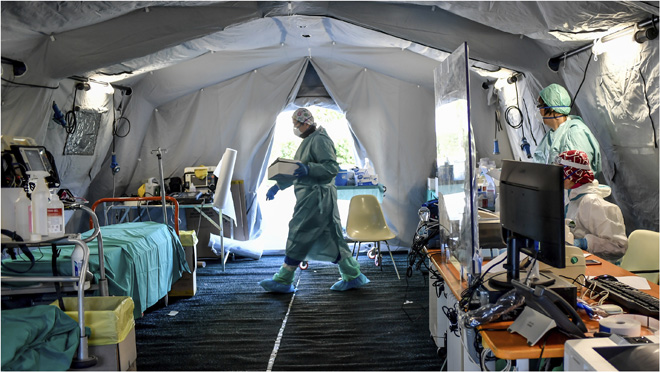
“There’s this fundamental issue that I’ve been thinking a lot about, which is protecting the health care workers, especially where they’re now having to provide these tests for huge numbers of people. Swabbing is quite an uncomfortable and invasive process. And is there any way that that that we might be able to automate that at some point? I don’t think that’s going to happen anytime soon. But it’s an interesting goal that we could move in that direction.”
“The other is the idea that intubation is an incredibly difficult process and very risky because a lot of droplets vaporizing happens. That’s another area where it would be very helpful if that could be teleoperated. Right now, the state of the art in telemedicine, tele surgery in particular, and these type of procedures is not ready for the situation we’re facing now. We are nowhere near capable of doing that. And so I think this is a really important wake up call to start to develop these technologies.”
Also, in the discussion, Jessica Armstrong who is a mechanical engineer at SuitX and local coordinator for Open Source COVID-19 Medical Supplies gave us updates on local PPE activities and how community grass roots initiatives like OSCMS and Helpful Engineering have been part of catalyzing networks of people to sew masks and gowns, to laser cut face shields and 3D print parts for PPE and medical equipment, and developing new designs for emergency ventilators and respirators, while we’re still waiting for manufacturers and the supply chain to meet the demand.
Perhaps most critically, groups like OSCMS and Helpful Engineering validate and share designs for PPE so that people aren’t wasting time designing their own solutions, nor putting health care workers at risk with badly designed homemade PPE.
Our second weekly discussion about “COVID-19, robots and us” from March 31 is now available online and as a podcast. You can sign up to join the audience for the next episodes here.
Special guests were Robin Murphy, Raytheon Professor at Texas A&M University and founder of the field of Rescue Robotics, Ross Mead, CEO of Semio and VP of AI LA, Wendy Ju, Interaction Design Professor at Cornell, Cory Kidd, CEO of Catalia Health – maker of medical social robots, Ken Goldberg, Director of CITRIS People and Robots Initiative and Jessica Armstrong, mechanical engineer at SuitX and local coordinator for Open Source Covid-19 Medical Supplies. Moderated by Andra Keay, Managing Director of Silicon Valley Robotics, with extra help from Erin Pan, Silicon Valley Robotics, and Beau Ambur from Kickstarter.
